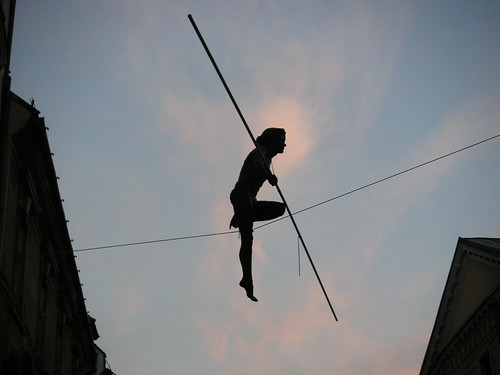The microprocessor is the cornerstone for all our technological devices. Moore, an Intel co-founder once prophesized that, “the number of transistors on a chip will double approximately every two years” (Intel, n.d.). Due to this rapid cycle, our society has come to expect the constant obsolescence of technology devices. The impact on education has meant that schools are also caught in a never ending loop of acquiring and integrating new tools.
Although we have no difficult imaging all the benefits that technology brings to education, Postman (1992) prompts readers to consider the costs. These technology costs can come in a variety of forms. For example, an economic cost can be the technology left languishing in the corner of the classroom without proper teacher support and encouragement to enable their use (Demetriadis et al., 2003; Hennessy, Ruthven, & Brindley, 2005; Mueller, Wood, Willoughby, Ross, & Specht, 2008). Another cost in the classroom might be the time investment, both in scheduling and preparation (Baylor & Ritchie, 2002).
Reflecting on the dialogue between O’Donnell and Engell, it became apparent that a balance needs to be struck in classroom (Cambridge Forum, 1999).

caption: Balancing lady orangebrompton CC BY-NC-SA 2.0
The image selected provides a metaphor for the balance between technology’s loss and gain. Educators cannot avoid technology; its pervasive nature is unavoidable. Technology will always be a part of our classrooms. On the other side of that balance are good pedagogical practices. Learning does not simply improve with increased access to technology; it can only come from the refinement of teacher skill and knowledge.
-Jerry
References
Baylor, A. L., & Ritchie, D. (2002). What factors facilitate teacher skill, teacher morale, and perceived student learning in technology-using classrooms? Computers & Education, 39(4), 395–414.
Cambridge Forum. (1999). From Papyrus to Cyberspace.
Demetriadis, S., Barbas, A., Molohides, A., Palaigeorgiou, G., Psillos, D., Vlahavas, I., Tsoukalas, I., et al. (2003). “Cultures in negotiation”: teachers’ acceptance/resistance attitudes considering the infusion of technology into schools. Computers & Education, 41(1), 19–37.
Hennessy, S., Ruthven, K., & Brindley, S. (2005). Teacher perspectives on integrating ICT into subject teaching: commitment, constraints, caution, and change. Journal of Curriculum Studies, 37(2), 155–192.
Intel. (n.d.). Moore’s Law Inspires Intel Innovation. Intel. Retrieved September 14, 2012, from http://www.intel.com/content/www/us/en/silicon-innovations/moores-law-technology.html
Mueller, J., Wood, E., Willoughby, T., Ross, C., & Specht, J. (2008). Identifying discriminating variables between teachers who fully integrate computers and teachers with limited integration. Computers & Education, 51(4), 1523–1537.
Postman, N. (1992). The judgment of Thamus. Technopoly: The surrender of culture to technology. New York: Vintage Books.



